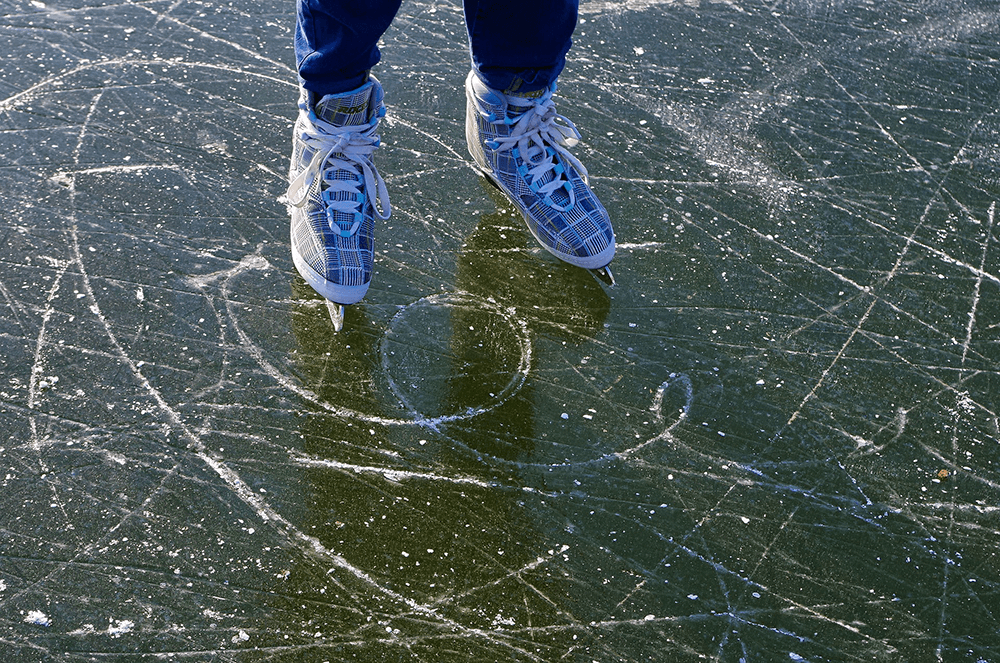
 Packing Tips
Packing TipsHow to Prepare Ice Skates for Long Term Storage
Storing seasonal items keeps a home blissfully clutter-free. However, when these items are not stored properly, they can experience premature wear and tear. In addition, seasonal items are often expensive, such as skis, beach accessories, and camping gear. To protect your finances, it is imperative to preserve these items well during their months when they are out of sight. How can you stow away precious belongings and keep them in great condition?
Ice Skates Have Unique Care Instructions
There are unique care instructions for each material that ensures that elements like pests, air, and moisture won't cause damage. Whether they are to be tucked away in the attic for the summer or be sent to a storage unit for over a year, you can project your seasonal sundries by following the right care instructions.
When it comes to seasonal equipment, ice skates are known for their meticulous care requirements and their high cost. It would be especially devastating to find damaged figure skates after months of storage. While standard skates cost well above $50 per pair, professional ice skates can easily cost over $1,000. However, when you follow these specific care instructions, you can keep your skates free from rust and protect its materials from drying out and cracking. Here are some answers to frequently answered questions about ice skate storage.
How Sharp Should the Blades be?
Before you store your skates, make sure that the blades are sharpened to a point that they are not too sharp. While hockey skates and inexpensive recreational ice skates can be sharpened with an automatic machine, figure skates should be professionally sharpened to achieve this perfect medium. To ensure that your skates have the right "edge" to them, avoid walking on the ground without wearing skate guards. This reduces the need to maintain your blades, which will make them easier to prepare for storage.
What Can be Done to Protect the Blades?
To keep ice skate blades in good condition, you must perform regular maintenance. Do not walk on any surface directly with blades, but instead wear blade guards. It is also important to dry the blades before putting on blade guards to prevent rust. You should also make sure that the mounting surfaces of the blade guards are dry. This area is a hidden source of moisture which can cause screws to rust and leather to rot.
How to Keep Ice Skates from Rusting?
Since rust is the number one destroyer of ice skate blades, it's imperative to dry ice skate blades after each skating session and before storage. This prevents water from settling on the blades and developing rust. Before storing your blades, dry them thoroughly with a towel. Then, cover the blades in a towel soaker that is made to cover ice skate blades. This uniquely absorbent cloth wraps around each blade after they are dried to continue and absorb any moisture that can come into contact with your skates.
What Should a Person do to Care for the Boot Portion?
Professional ice skates use leather for the boot portion, which is highly susceptible to water damage. When leather is exposed to too much moisture, it can rot. To keep the leather water-resistant, you must treat the boots regularly with figure skate shoe polish. This type of polish can be easily found online or at your local sporting good store.
A regular coat of polish will keep water from being absorbed into the leather, but instead bead and roll off. After each skating session, open the boots to air them out. Pull the tongue up and loosen the laces to allow air to circulate and breathe throughout the boot's interior. The insole is also a sneaky source of moisture. Over time, it will wear down and start to smell as it retains some moisture. Replace this part as often as needed to keep the skate smelling fresh and to keep it free from interior moisture.
Are There Other Maintenance Tips for Laces?
Ice skate laces are also known for wearing down when they are not cared for properly. First of all, it's important to get the right length of lace for the boot. Long laces can be a safety hazard if they become loose and drag on the ice. Short laces cannot tie the boot properly and result in an improper fit. For the best performance, buy laces made specifically for figure skates. These are available in the correct lengths and are made of fibers that are strong enough to keep a skate boot on securely.
As with all fiber-based items, laces can wear down when wet. Wipe down the laces after each use to keep them clean and free from water damage as long as possible. Due to the stress that laces undergo, it is inevitable that they'll be replaced over time. Keep spare laces with you to always be prepared. Before storage, it is best to remove the ice skate's laces as they are the most prone to wearing down over a long period of time. It is best to put new laces on your boots after you take them out of storage.
How to Perform Proper Ice Skate Mount Maintenance
In addition to all these other considerations, you must make sure that the screws that secure the blade to the boot are tight enough and free of rust. Due to the intensity of the sport, these screws loosen over time. Before storage, have a professional figure skate tech re-mount the blades and replace any faulty screws. Lubricate the screws as well to keep them free from developing rust during storage. When you're done with all this prep, place your skates in a container that keeps dust, moisture, and pests away.
We're Your Storage Solution!
Storage Rentals of America is your convenient self-storage solution. So come into our office or give our storage experts a call at 1-800-457-5678. Our call center is available 7 days a week and can help determine which storage unit size best fits your storage needs.



